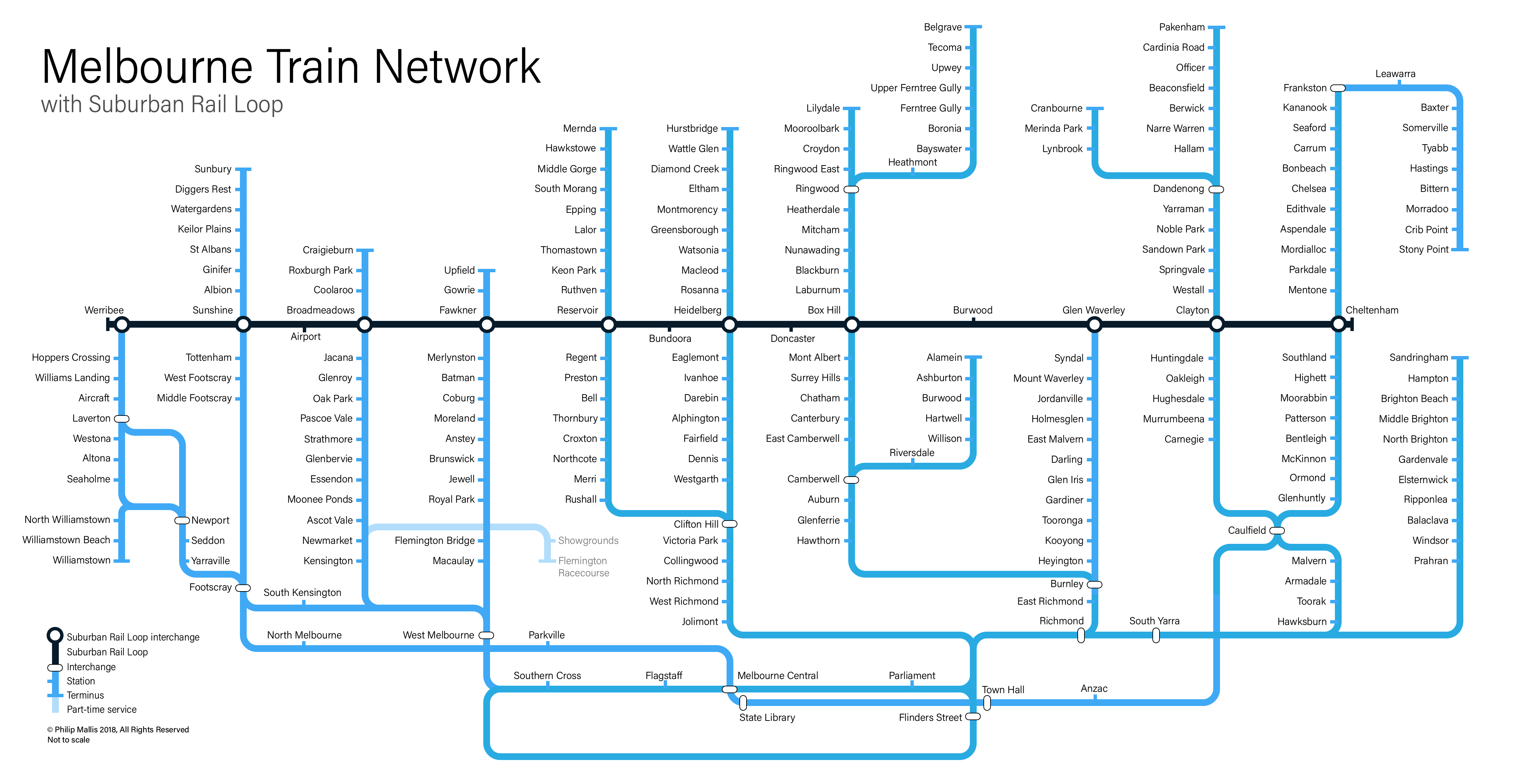The announcement of the Suburban Rail Loop this week has had a huge impact on discussions about Melbourne’s public transport network.
As outlined in this partner post, it can also have significant implications for cartography and how we conceptualise our rail network. This map is one of many exciting possibilities and I hope to explore more of these in the near future.

